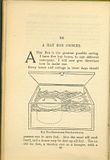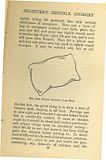Hi, this is my first post after lurking a while, I do enjoy reading the forums.
I've been thinking a lot about what kind of foods to take with me on overnighters or 2 to 3 night trips in the scottish hills. So far all I've got on my list beyond the obligatory sandwich for the walk in is :
Brew kit and snacks:
- crusader cook-set in pouch with plenty ethanol gel, various instant soups, tea bags, instant coffee, hot chocolate, sugar, powdered creamer. A few bars of chocolate and flapjack type things. A few days worth of comfort in 1 pouch if you bin the horrid 58 pattern waterbottle.
Breakfasts :
- pre-portioned porridge oats with powdered milk and brown sugar in ziplock bags
- pre-portioned pancake mix made of powdered milk and egg, and self raising flour (yet to test this) with jam
supplement with seasonal foraged fruits such as blueberries, brambles, rasps etc
Lunches :
- pumpernickel (dark heavy rye bread) with hard waxy cheese like very mature cheddar or gouda and dry-cured preserved sausage like salami (these foods should last well over 2 or 3 days in cool weather) and maybe mayo in fast-food style plastic sachets. A couple of tins of sardines is very little extra weight to carry aswell.
- instant soup
supplement with foraged greens such as nettle added to soup, wood sorrel to perk up the sarnie etc.
Evening meals :
- pre-portioned couscous with stock powder (crumble in an oxo or whatever) and additives like raisins, nuts, dried onions, garlic salt, spice mix etc, add pre-cooked vac-pac pulses and maybe sardines/tuna?
The evening meals is what I'm having trouble with really. I don't think I would begrudge carrying a few potatoes and a couple of carrots with me, its the matter of getting meat protein in there without it going off over time, or having to spend loads of time boiling pulses. Any advice is much welcome.
One thing that seems to be a bit of a mantra here, is that that bushcraft is about being comfortable out in the wilds, but tbh eating spam and instant noodles mixed with cuppasoup is not my idea of comfort, letalone eating MRE's or wayfarer meals.
Most of my trips will have a fishing slant to them, so there is a good chance of fresh fish protein.
Anyway I welcome any suggestions of good tasty nutritious food to carry on such trips, and look forward to hearing what you guys like to take with you!
Quite the luxury food there mate.





